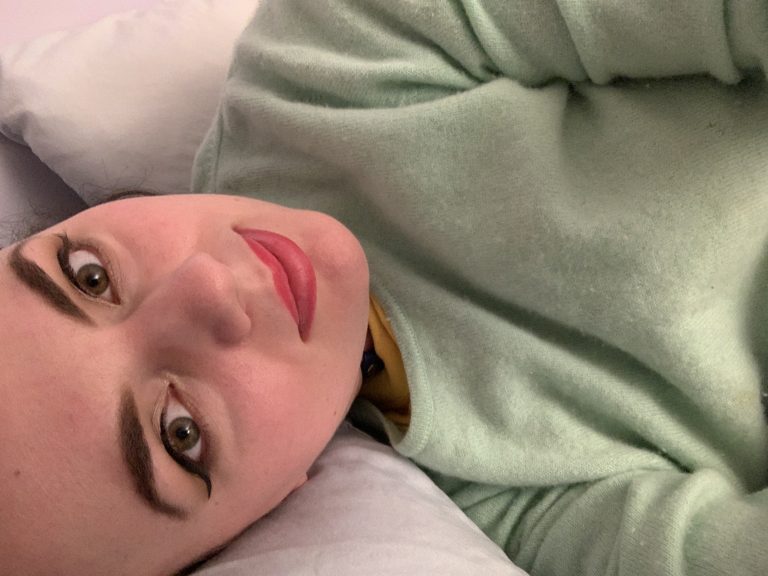
Many of my sex educator friends despise the term “foreplay.” The way it’s traditionally used, it refers to any sexual activities that precede intercourse, from kissing to dry-humping to oral sex. This definition is problematic for so many reasons: it leaves out queer and trans people, as well as people who can’t or don’t want to have penetrative sex (for reasons medical, psychological, and otherwise), while devaluing and de-emphasizing sex acts that many people enjoy and find wholly satisfying all on their own. (My sex life, for one, is deeply enriched by self-contained oral sex sessions!) This conception of foreplay also implies that sex is a scripted endeavor that must unfold in a particular order without deviation. Overall, it leaves a lot of people unsatisfied and forgotten.
While many high school teachers forbid their students from using Wikipedia as a source for assignments, I’m a grown-up so I can quote Wiki as much as I like, and their definition of foreplay, being crowd-sourced, is pleasingly inclusive: “Foreplay is a set of emotionally and physically intimate acts between two or more people meant to create sexual arousal and desire for sexual activity. Although foreplay is typically understood as physical sexual activity, nonphysical activities, such as mental or verbal acts, may in some contexts be foreplay. Foreplay can mean different things to different people.” (Emphasis mine.) YES, Wikipedia!! This is the definition I want you to keep in mind as you read this post.
I’m enthralled by foreplay as a concept, particularly since reading Emily Nagoski’s book Come As You Are a few years ago and learning that I have what’s called “responsive desire”: I usually don’t get turned on until sexual stimulation – physical, mental, or ideally both – is already happening. Nagoski posits in her book that women’s desire is likelier to be responsive, while men’s is likelier to arise more spontaneously – though these are, of course, just over-arching trends and not set-in-stone rules. But maybe these tendencies are to blame for the cultural perception that foreplay is something women need and that men could take or leave. Nothing is ever that simple when it comes to sexuality (and where the hell does that narrative leave trans and non-binary people?!).
In any case, today we’re going to talk about solo foreplay, i.e. providing yourself with your own foreplay. The way I see it, there are 3 main reasons a person might like to do this:
- As a prelude to masturbation, to make it more pleasurable, decadent, romantic, momentous, etc., rather than just hopping into the action immediately.
- As a replacement for foreplay with your partner, perhaps because the foreplay you do with them is unsatisfactory in some way (in which case, I would recommend discussing that with them when you feel able to do so), because you have a limited time window in which to have sex with them (e.g. the 20 minutes between them getting home from work and the two of you having to leave for a family function) and you want to make the most of it, or because you’re feeling submissive and have been commanded (or have offered) to get yourself turned on before your partner arrives, so they can “use you.” 😏
- As a supplement to foreplay with your partner, to make the whole sexual encounter more pleasurable and exciting for you.
Whatever your reasons for actively turning yourself on, having the ability to do so can feel highly empowering – especially for people who have been socialized to believe that their arousal is someone else’s job to conjure up. It can be, but it doesn’t have to be, and you’re denying yourself a vast range of wonderful experiences if you depend solely on your partner to get you revved up!
With that in mind, here are some suggestions for ways you can stoke your own fire, so to speak:
Eliminate stressors, as much as possible. Stress has an actual physiological effect on your ability to get aroused, so – while you may not be able to tune out every little thing that’s making you anxious or sad – try to set the stage for a stress-free session of sensuality. I find that even just tidying up my room, putting on some relaxing music, and turning off my phone can help me breathe a sigh of sweet relief.
Fantasize. Let your inner perversions run wild! Recall a sexy memory. Imagine fucking your favorite fictional character. If you’re planning to have sex later, this step could be as simple as vividly picturing (or even sexting about) what you hope will happen. See where your dirty mind takes you!
Watch porn or read erotica. This is my go-to when I just don’t have the focus, energy, or creativity for fantasizing. If you’re nerdy like me, you may even want to start keeping a document or spreadsheet of the links that turn you on the most – whether they’re amateur blowjob clips, hypno erotica, or Brooklyn Nine-Nine fanfiction – so you can return to them whenever you need a reliable libido boost.
Use an arousal gel. These are topical products meant to be applied to the genitals (they are usually designed for clits, but can feel good on penises too!) to encourage bloodflow to the area through the use of mild tingling or warming ingredients. Promescent’s Female Arousal Gel, for instance, contains peppermint, which will certainly get your blood pumping! I find that these make me more sensitive, too, often resulting in longer and stronger orgasms.
Touch yourself, even just non-sexually (although sexual touch is lovely too!). Massage your aching muscles with a wand vibrator. Moisturize your whole body while gently kneading out the knots of tension. Grab a good lube and massage your nipples, the area around your genitals, and your genitals themselves – slowly and methodically, noticing how everything feels.
Try a little pain. This is totally optional, since not everyone finds pain sexy, but it can encourage bloodflow and greater sensitivity, so it’s worth a shot! You can slap, scratch, or pinch your skin, or experiment with nipple clamps, Wartenberg wheels, and other instruments of sadomasochism. Straight-up pleasure is nice, but pain can feel delicious too!
And finally… Don’t put pressure on yourself to get super turned on, or have an orgasm, or look hot while doing it, or anything. The traditional concept of foreplay paints it as a goal-oriented on-ramp, but sometimes it can just be play. If it leads to more, great! If not, great! Solo play is about getting in touch with your own body and your own pleasure, however that manifests for you.
Do you ever do your own foreplay? What are your favorite methods?
This post was sponsored by the wonderful folks at Promescent, who recently released a new collection of lubricants as well as a pepperminty arousal gel that I think lots of you would enjoy. As always, all writing and opinions are my own.


